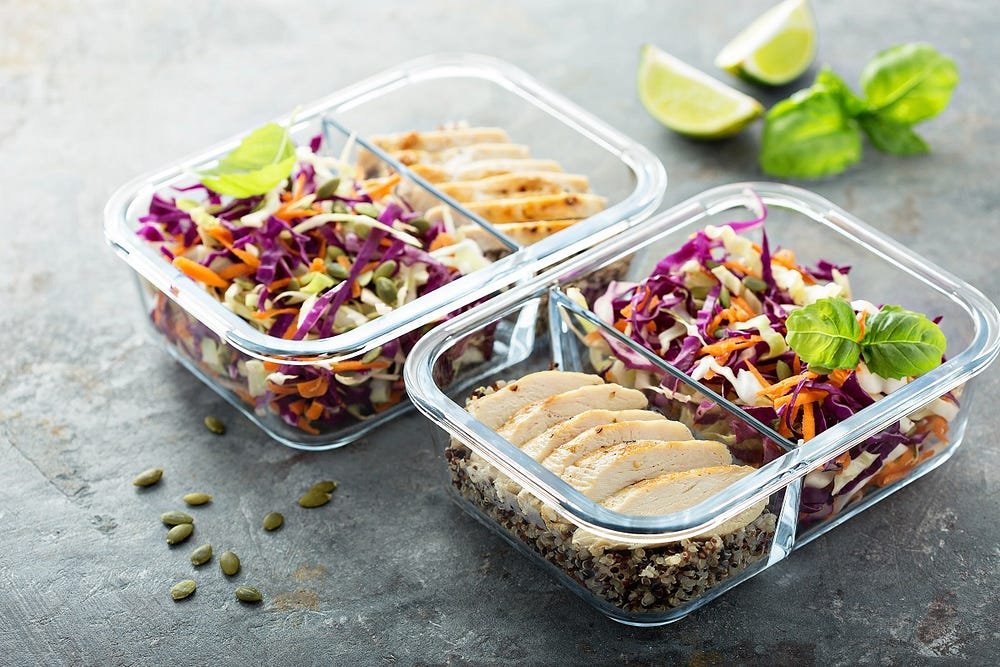You’re probably wondering how you can elevate your lifestyle without draining your wallet.
Well, it’s all about striking the right balance between spending and saving.
Simple, yet effective, money-saving hacks such as smart shopping, maximizing cashback, and DIY projects can greatly reduce costs.

But what if you could also travel more, dress better, and get fit without overspending? Intriguing, right?
Stay tuned as we explore these budget-friendly strategies further, showing you how to live your best life without breaking the bank.
Embrace Budgeting and Planning
To effectively save money, you need to embrace budgeting and planning as key strategies for financial growth.
This isn’t just about logging every penny spent or avoiding splurges—it’s about creating a systematic plan that aligns your income with your financial goals. It’s about savvy money management, and using innovative tools and technologies to streamline your budgeting process.
Developing a budget allows you to pinpoint areas where you’re overspending, and it’s a proactive way to prevent financial missteps.
It’s a map that guides you in making sound financial decisions, ensuring that your expenses don’t outpace your income. With a clear budget, you’re in control, and you’re less likely to succumb to impulse purchases.
Planning, on the other hand, is all about the future.
It helps you anticipate financial needs and obligations down the line, ensuring you aren’t blindsided by unexpected expenses. It’s about setting and achieving financial milestones, be they short-term or long-term.
By planning, you’re not just saving money—you’re building a sturdy financial foundation for your future. Keep in mind, budgeting and planning aren’t restrictive—they’re empowering.
They allow you to live within your means, while still pursuing your financial dreams.
Leveraging Cashback and Rewards
Harnessing the power of cashback and rewards programs can lead to substantial savings over time.
These programs allow you to earn back a percentage of your spending in points or cash, which you can then put towards future purchases.
Not every cashback or reward program is created equal, though.
You’ll need to keep in mind the benefits of each to decide which ones align with your lifestyle and spending habits. Look for programs that offer high returns on categories where you frequently spend.
However, don’t let these incentives prompt you to spend more than you’d otherwise.Consider using a combination of rewards credit cards, cashback apps, and loyalty programs to maximize your savings.
Credit cards often offer substantial rewards on categories like travel and dining out. Cashback apps give you money back on a wide range of purchases, while loyalty programs reward you for frequent shopping at specific stores.
Innovative use of these programs can help you stretch your budget further. However, it’s crucial to bear in mind that the ultimate goal is to save money, not to spend more to earn rewards.
By carefully leveraging cashback and rewards, you can upgrade your life without breaking the bank.
Smart Grocery Shopping Techniques
Just as you can maximize savings with cashback and rewards programs, you can also greatly reduce costs with smart grocery shopping techniques. The key here is strategic planning.
Start by creating a shopping list. This keeps you focused, reduces impulse purchases, and guarantees you’re buying only what you need.
Next, consider buying in bulk for non-perishable items.

You’ll often find that the unit price decreases as the quantity increases, leading to significant savings over time. Just be sure not to overdo it – wasting food is wasting money.
Don’t overlook grocery store apps, either. Many have digital coupons, special deals, and loyalty programs that can help you save. You can also use price-comparison apps to make sure you’re getting the best deal.
Lastly, consider shopping at local farmers’ markets.
Not only will you be supporting local businesses, but you’ll often find fresh, high-quality produce at lower prices than in supermarkets.
DIY Home Décor Ideas
Sprucing up your home doesn’t have to break the bank, especially when you explore the world of DIY home décor.
This arena offers a treasure trove of creative, cost-effective ideas that not only add personal touches to your space but also elevate its aesthetic appeal.
Repurposing items you already own is a smart way to start.
An old ladder can transform into a chic bookshelf, or a vintage suitcase could serve as a quirky side table. It’s about seeing potential in what you’ve got and using a dash of creativity to bring it to life.
Next, consider homemade artwork. It’s personal, unique, and often a conversation starter. You don’t have to be an artist to create something special. Simple abstract designs or your favorite quotes on canvas can do the trick.
Lastly, don’t underestimate the power of plants.
They’re affordable and add a fresh, lively vibe to any room. Succulents, in particular, are low-maintenance and can be displayed in creative ways like in repurposed jars or hand-painted pots.
Thrifty Traveling Tips
Moving from home décor to your travel plans, let’s explore how you can save money while satisfying your wanderlust with some thrifty traveling tips.
The key is to plan strategically and be well-informed.
First and foremost, consider booking your flights during off-peak periods. Airlines often lower their prices during these times to fill seats. You’ll not only save money, but you’ll also avoid the crowds.
In addition, rather than staying in pricey hotels, consider alternatives like Airbnb or hostels. These options often offer a more authentic and personal experience, and they’re usually more wallet-friendly.
Use public transportation whenever possible. It’s typically cheaper, and it’s also an excellent way to immerse yourself in the local culture.

Furthermore, instead of dining out for every meal, why not visit a local market and prepare some meals yourself? You’ll save money and get a taste of local cuisine.
Lastly, consider travel insurance.
It might seem like an unnecessary expense, but it can save you significant costs in the event of medical emergencies or flight cancellations.
By implementing these thrifty traveling tips, you’ll be able to explore the world without emptying your bank account.
Economizing Your Energy Usage
Turning our attention to your home, prioritizing economizing your energy usage is essential as it’s a simple and effective way to save money and reduce your environmental impact.
This not only aligns with the global trend of sustainability, but also boosts your financial flexibility.
Start with something as simple as replacing your existing light bulbs with energy-efficient LED bulbs. They’re not only longer-lasting, but also consume less electricity.
Next, consider investing in programmable thermostats. These smart devices auto-adjust the temperature when you’re not home, cutting down on unnecessary energy consumption.
Take a step further by insulating your home properly.
This helps maintain a comfortable temperature while minimizing the need for heating and cooling, thereby saving energy. A well-insulated home keeps the warm air in during winter and the cool air in during summer.
Lastly, think about using energy-efficient appliances. While they may seem expensive upfront, they’ll pay off in the long run with significant energy savings.
Energy conservation isn’t just a trend, it’s a lifestyle change that brings about real benefits to your wallet and the planet. It’s a win-win situation where you can live an upgraded life without breaking the bank.
Mastering Meal Prepping
Shifting your focus to the kitchen, mastering the art of meal prepping can serve as a significant money-saving life upgrade. This practice revolutionizes your relationship with food, optimizing your budget while enhancing your health.
To start, you’ll need to plan your meals for the week.
This strategy allows you to buy only what you need, reducing food waste and your grocery bill. A tip here is to create a meal plan around sales at your local grocery store.
Next, invest in quality containers – they’ll guarantee your meals remain fresh for longer, and they’re more essential in the long run than disposable ones.

Cooking in bulk is another crucial component of meal prepping. It’s more efficient to cook large amounts of food at once than to prepare individual meals each day. This not only saves time but reduces energy consumption, translating into savings on your utility bill.
Finally, embrace the freezer. Freezing prepped meals extends their lifespan, allowing you to capitalize on sales for bulk items.
All in all, meal prepping is an innovative solution to modern living – saving money, boosting health, and reclaiming time.
Economical Fashion Hacks
Dressing fashionably doesn’t have to break the bank; savvy shopping and strategic wardrobe choices can transform your closet into an economical, stylish haven.
Start by investing in timeless pieces that can be mixed and matched to create a variety of looks. Think a classic white shirt, a well-fitted blazer, or a pair of quality jeans. These items might cost a bit more upfront, but their versatility will save you money in the long run.
Second-hand shopping is another economical approach to fashion.
Thrift stores, consignment shops, and online platforms like Depop or Poshmark offer gently used, high-end items at a fraction of their original price. It’s an eco-friendly option that’s budget-friendly too.
Sales and discounts are your friends.
Subscribe to newsletters of your favorite retailers to get notified about sales and exclusive deals. Also, consider shopping out-of-season: buying winter wear in the summer and vice versa can result in significant savings.
Lastly, don’t underestimate the power of DIY.
Simple alterations, like hemming a dress or changing buttons on a coat, can make a piece look more expensive. With these hacks, you’ll upgrade your style without downgrading your finances.
Affordable Fitness Strategies
Keeping fit doesn’t have to cost a fortune; you can achieve your fitness goals with budget-friendly strategies and a dose of creativity.
There’s a misconception that fitness equals expensive gym memberships or high-end equipment. In reality, you can get in shape without breaking the bank.
Consider utilizing free online resources. YouTube, for instance, offers countless fitness videos for any skill level, from beginner workouts to advanced routines.
The vast digital landscape allows you to find a workout that fits your preferences, whether it’s yoga, cardio, or strength training.
You can also get active outdoors.
Activities like running, hiking, or even gardening can provide a great workout. These not only promote fitness but also offer the added benefit of connecting with nature, which boosts your mental wellness.
Invest in affordable, multi-purpose equipment. Resistance bands, jump ropes, and kettlebells don’t take much space, yet offer a variety of exercises.
Buying second-hand equipment or sharing costs with a workout buddy can further reduce expenses.
Investing in High-Quality Items
When it comes to making purchases, investing in high-quality items can be a savvy move that saves you money in the long run. It’s about spending wisely, not necessarily spending less.
High-quality items, though initially more expensive, often outlast their cheaper counterparts, providing better value over time.
Think about it. Instead of buying a low-cost item multiple times when it wears out or breaks, you’re making a one-time investment in a quality item that lasts.

It’s the difference between purchasing a cheap blender every year or investing in a high-end model that will work flawlessly for years.
Moreover, high-quality items often bring enhanced performance and user experience. A well-crafted pair of shoes, for example, not only lasts longer but also provides better comfort and support for your feet.
A high-quality laptop might run faster and more efficiently, saving you time and frustration in the long run.
Final Words
So, you’re ready to upgrade your lifestyle without overstretching your budget? Keep in mind, it’s all about smart choices.
Embrace budgeting, maximize cashback, be strategic with grocery shopping, and explore DIY home décor.
Don’t overlook thrifty travel tips, meal prepping, affordable fashion, and fitness hacks.
Invest in high-quality items for long-term savings.
With these money-saving strategies, you’re well on your way to a life upgrade without breaking the bank. Happy saving!

